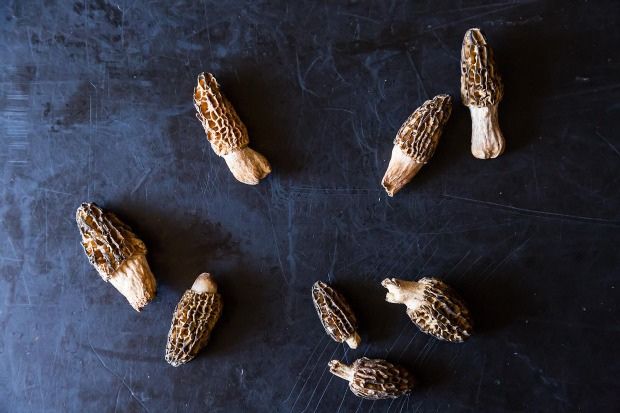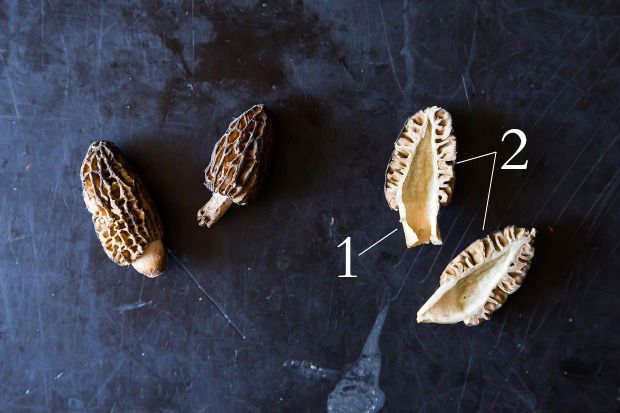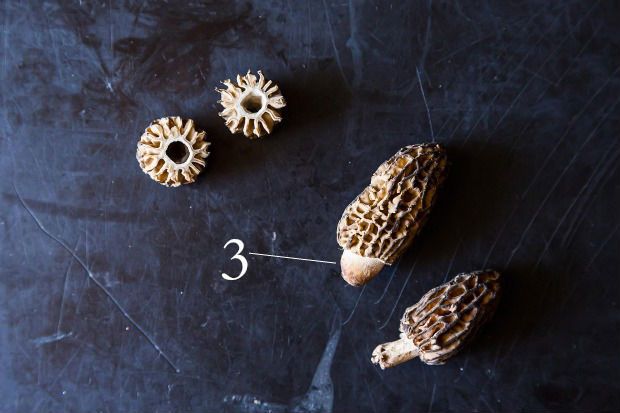Every week we get Down & Dirty, in which we break down our favorite unique seasonal fruits, vegetables, and more.
Mr. Morel might not really be a mushroom, but he's still a fun guy!* Learn how to store your morels, whether or not it's okay to wash them, and how to enjoy them all week long.

Morels are commonly thought of as mushrooms, but without gills or pores, they don’t have the same structure of the mushrooms we know and love. Morels and mushrooms are all fungi, but they belong to two different divisions: morels (and truffles) belong to a group referred to as sac fungi. Mushroom does have a better ring to it, though, doesn't it?
There are a number of different species of morels (just how many is still hotly contested). For simplicity's sake, they are generally referred to by color (white, yellow, gray, black, and so on). It can be so difficult to identify various species by visual cues alone that sometimes even genetic testing is required!
What to Look For
You can find morels at your local farmers market or upscale grocery stores. (Or, you can forage for them -- more on that below.) Choose tender morels with a fresh, earthy aroma and avoid specimens that have soft spots, bruises, or an unpleasant or sour smell.
More: Not sure where the nearest farmers market is? Find one on Real Time Farms.

Consider This Fair Warning
Morel hunting is an extremely popular spring activity, but if you go this route, be careful! There are a number of false morels that are poisonous, so this isn’t something to mess around with. True morels are hollow (1) inside -- steer clear of anything with a white cottony substance in the center. The caps of true morels look like honeycombs or nets, and they have craters or pits (2) in them; false morels have caps that appear wrinkled or brain-like. These are just a couple of points of identification -- arm yourself with a guidebook, or better yet, go with an experienced morel hunter.
How to Store and Prep
Like so many other spring delicacies, you’ll want to use your morels as soon as possible. If you have to wait, keep them refrigerated in a basket or bowl, and cover them with a damp paper towel or cotton cloth (if your morels seem really moist, stick with a dry paper towel). Alternatively, simply refrigerate the morels in a paper bag. Keep them away from foods with strong odors, like onions.
Before you cook, check morels for critters and dirt, since they like to hide sand and soil. We like to give them a little bath: rinse or briefly soak them in cool water, and repeat until you don’t see any grit left behind. Gently dry the morels and trim the stems (3) as needed. (We know some people are firmly in the never-ever-ever wash mushrooms camp -- to each their own. Although we do have Alton Brown, Jacques Pepin, Harold McGee, and Gourmet magazine on our side...)

How to Use
Leave your iron and aluminum pans in the cupboard, as they can impart a metallic taste to your 'shrooms -- you'll want to cook your morels in a stainless steel or Teflon-coated pan instead. Morels have a milder flavor than many other wild edible fungi, so however you choose to prepare them, take care not to overpower their distinctive taste. Morels’ pitted caps are perfect for holding onto butter and creamy sauces, and they pair well with other spring treats like asparagus, fiddleheads, and peas. What are your favorite ways to cook morels? We’ve got ideas for a week’s worth of dishes:
Friday: Baked Risotto with Morels and Asparagus
Saturday: Morel Crostini
Sunday: Linguine with Asparagus, Morels, and Fava Beans
Monday: Mama’s Morels Fried in Butter
Tuesday: Rapturous Morel Marmalade with Goat Cheese Polenta
Wednesday: White Asparagus Ribbons with Morels and Brown Butter
Thursday: Fusilli with Peas, Morels, Mint and Pecorino
Photos by James Ransom
*This teaser was brought to you by Karl Rosaen.




See what other Food52 readers are saying.